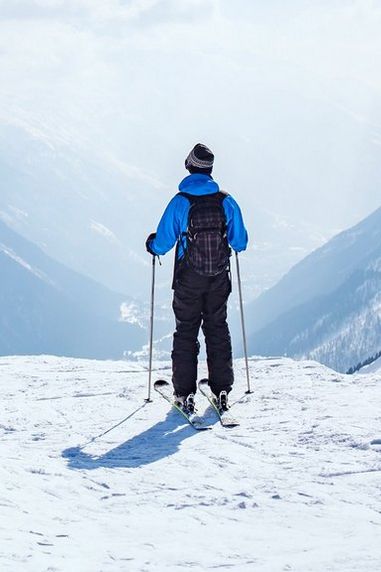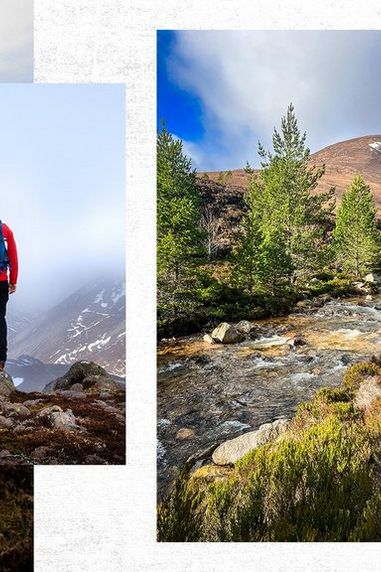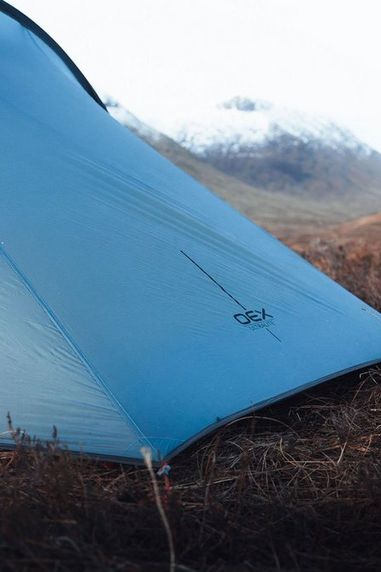Swimming in cold water has become increasingly popular in recent years and for good reason. Cold water swimming can offer numerous physical and mental benefits, making it a popular activity among outdoor enthusiasts seeking a unique and refreshing way to engage with the natural environment.
Wonderful Wild Women is a female-focused outdoor group based in the Lake District. Founded by Sarah Gerrish after her move back to Cumbria to balance her busy schedule with trying to get back outdoors. Today, it regularly brings women together to enjoy the great outdoors, providing them with a network of friends which allows them to learn new outdoor skills that they may have been too busy to learn or not have had access to previously.
While the Wonderful Wild Women practise many outdoor activities such as hiking or running, cold water swimming is a firm favourite among the members. So, when Helen Skelton met up with the group in her native Lake District the choice of endeavour was as clear as the bracing mountain water.
What is Cold Water Swimming?
As you can probably ascertain cold water swimming involves immersing yourself in natural bodies of water, such as lakes, rivers, or the sea, where the water temperature is significantly colder than typical swimming conditions. Here in the UK cold water swimming spots can be found all year round, as the temperature of the water in the UK seldom rises above 20°C, which is significantly lower than the human body's normal temperature of 37°C. Many cold dips can often take place in colder seasons or even during winter when the water temperature can drop to near-freezing temperatures.
This activity is not only a physical challenge but it’s also a mentally invigorating and exhilarating experience. Cold water swimmers even embrace the icy temperatures, sometimes even breaking through the thin layer of ice to plunge into the frigid water. It requires mental resilience, adaptability, and respect for the power of nature.

Cold water swimming has long been suspected of multiple health benefits and now the science and studies are there to back this up. Cold water stimulates a natural response from your body; Releasing chemicals into the body inclusive of dopamine, serotonin and cortisol.– Vicky McCreadie, Cold-Water Swim Coach.
What are the Benefits of Cold Water Swimming?
• Improved immune system: Cold water swimming can help to boost the immune system by increasing white blood cell production. This is thought to be due to the body's response to the cold, which triggers a stress response that releases hormones that have boosting effects on your immune system
• Reduced inflammation: Cold water swimming can also help to reduce inflammation throughout the body. This is because cold water constricts blood vessels, which helps to reduce blood flow to inflamed areas
• Improved circulation: Cold water swimming can help to improve circulation by increasing heart rate and blood flow. This can help to reduce the risk of heart disease, stroke, and other cardiovascular problems
• Weight loss: Cold water swimming can help to burn calories and promote weight loss. This is because the body must work harder to maintain its core temperature in cold water
• Reduced stress and improved mood: Cold water swimming can help to reduce stress and anxiety. This is thought to be due to the release of endorphins, which are hormones that have mood-boosting effects. As well as this swimming in cold water can also help to improve overall well-being. This is thought to be due to the combination of the physical and psychological benefits

How to Cold Water Swim Safely
When considering cold water swimming, there are a few important factors to remember to ensure you stay safe and get the most from your wild swim. One main consideration is that when entering cold water with a temperature below 15°C and you're not accustomed to it, your body may react with an involuntary gasp. This is often followed by hyperventilation, which is not within your conscious control. If you've jumped or dived in, or if the water is turbulent, water can enter your lungs, leading to rapid drowning. To avoid this, make sure to enter cold water slowly and in a controlled manner and wait a couple of minutes until you can control your breathing before swimming.
• Acclimatize gradually: Allow your body to acclimate to cold water by starting with shorter swims in milder temperatures before attempting longer or colder swims. This helps your body adjust to the shock and stress of cold water
• Swim with a buddy: Swimming with a partner or in a group is always safer. In case of any unforeseen circumstances or emergencies, having someone nearby can provide assistance and support
• Know your limits:Understand your swimming abilities and limitations. Cold water can be physically demanding, so don't push yourself beyond your comfort zone or swim more than you know you’re capable
• Dress appropriately: Wear suitable cold water swimming gear, such as a wetsuit or insulated swimwear, to help retain body heat. Protect extremities by wearing neoprene booties, gloves, and a swim cap. Dressing appropriately for the conditions is essential to prevent hypothermia
• Use a tow float: A tow float is a bag that can withstand water and has air inside, providing it with buoyancy. The swimmer attaches the bag to themselves using a strap fastened around their waist, and it floats behind them as they swim forward. Perfect for not only staying buoyant but also staying visible.
• Enter and exit the water safely: Take caution while entering and exiting the water, as rocks, slippery surfaces, or currents can pose risks. Use designated entry points and be mindful of the surroundings
• Monitor water temperature: Stay informed about the water temperature before swimming. Extremely cold water can be hazardous, so be aware of local conditions and avoid swimming in dangerously low temperatures
• Listen to your body: Pay attention to any signs of discomfort, fatigue, or numbness while swimming. If you start feeling extremely cold or experience cramps, exit the water immediately and warm up
• Warm up afterwards: After swimming, it's crucial to warm up gradually to prevent a rapid drop in body temperature. Change into dry clothes, cover yourself with warm blankets, and consume warm drinks to help raise your core temperature
• Be aware of the “after drop”: This is when your core temperature continues to drop after exiting the cold water, often leaving you feeling colder than when you were immersed in it
• Be aware of hypothermia symptoms: Learn to recognize the signs of hypothermia, including shivering, confusion, loss of coordination, and very pale skin. If you or anyone in your group shows symptoms, seek medical assistance immediately
It is important to be seen, so a tow float is an unarguable piece of equipment for me. In all circumstances. This alongside a bright swim hat or bobble hat keeps you visible to other water users– Vicky McCreadie, Cold-Water Swim Coach.
If you want to give cold water swimming a go yourself, or you'd like to know more about the group, follow the Wonderful Wild Women Instagram here for more swimming advice and inspiration.




